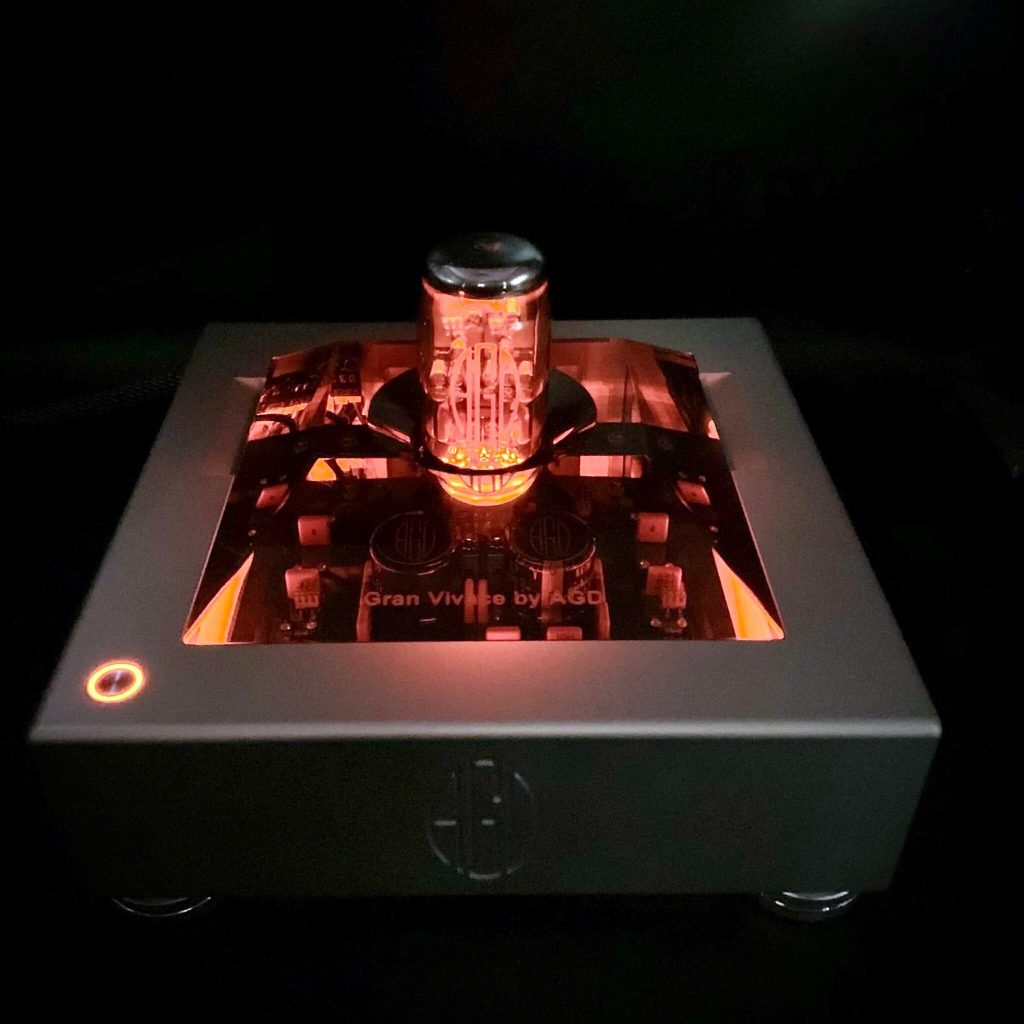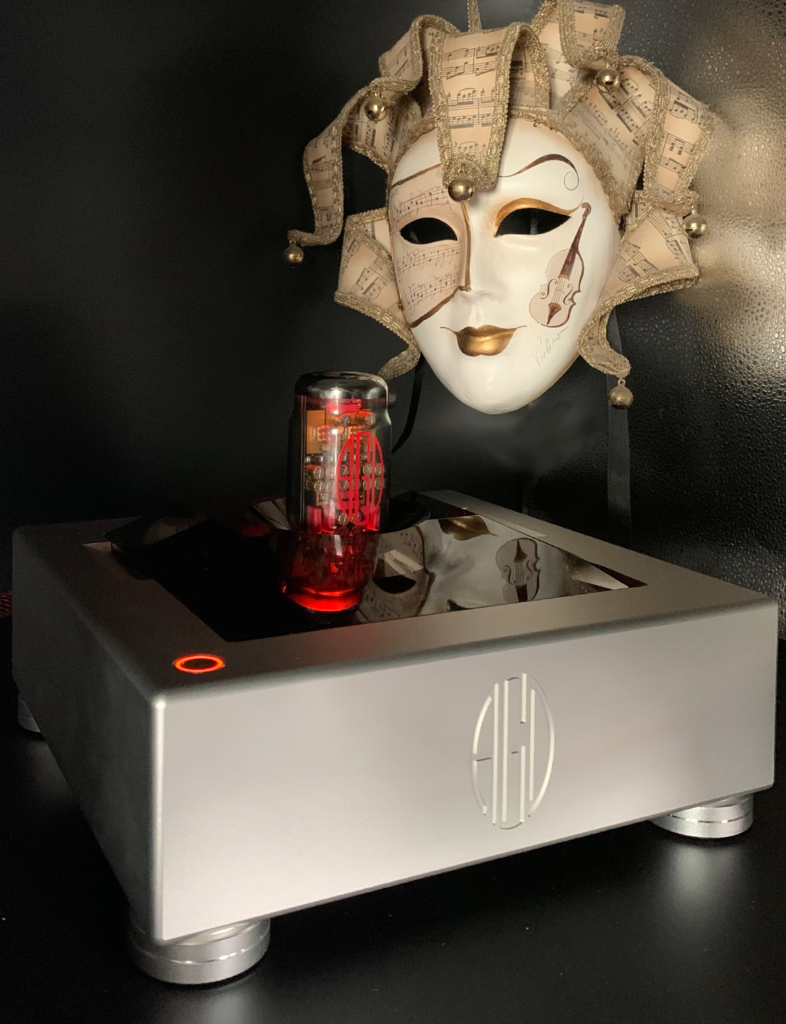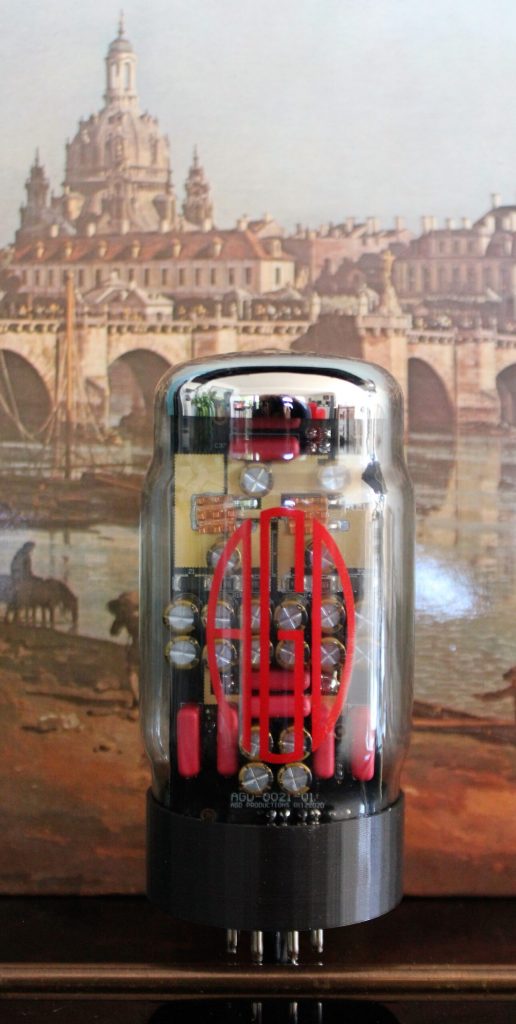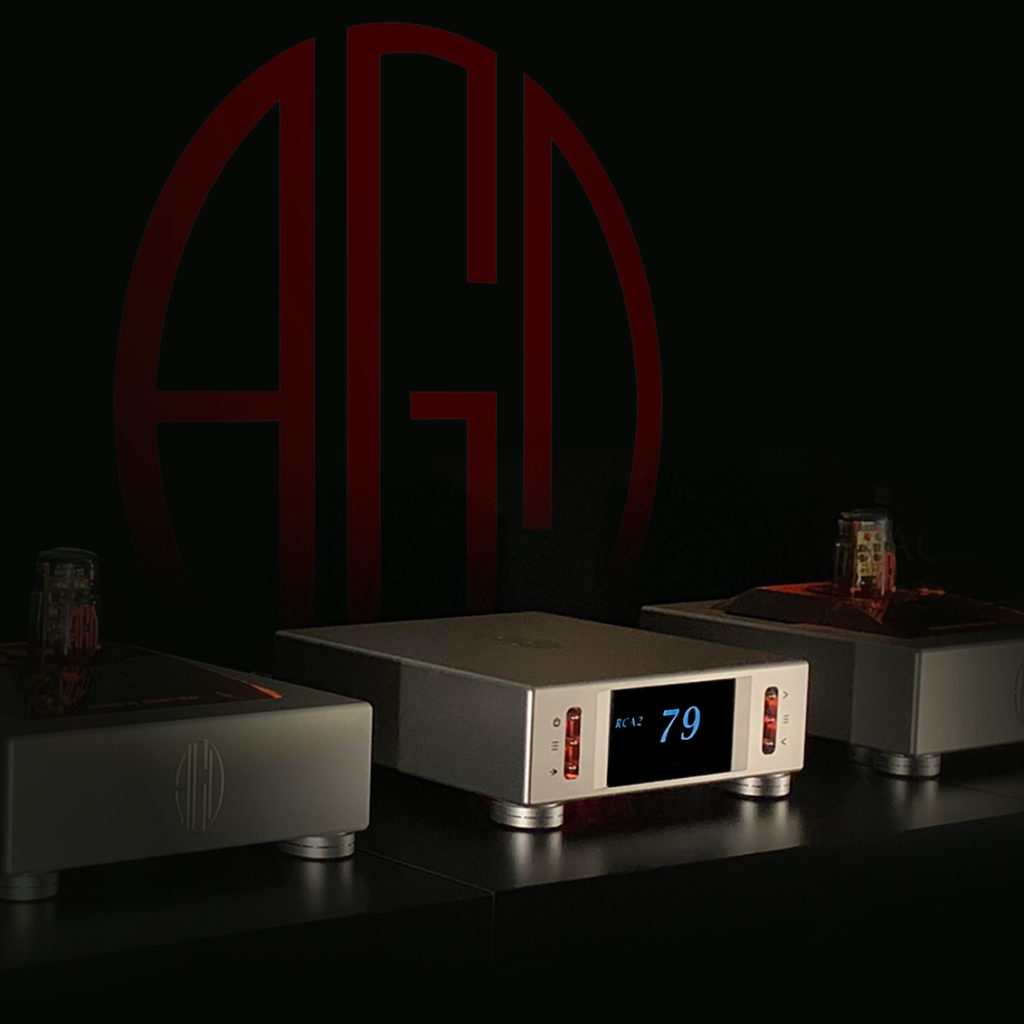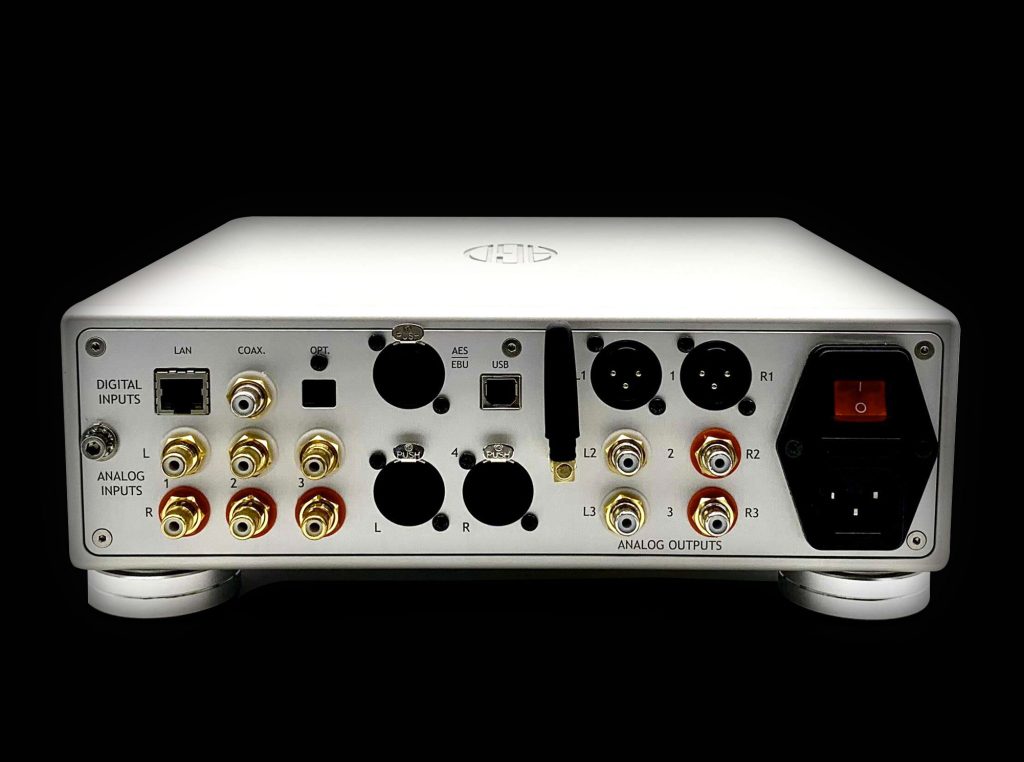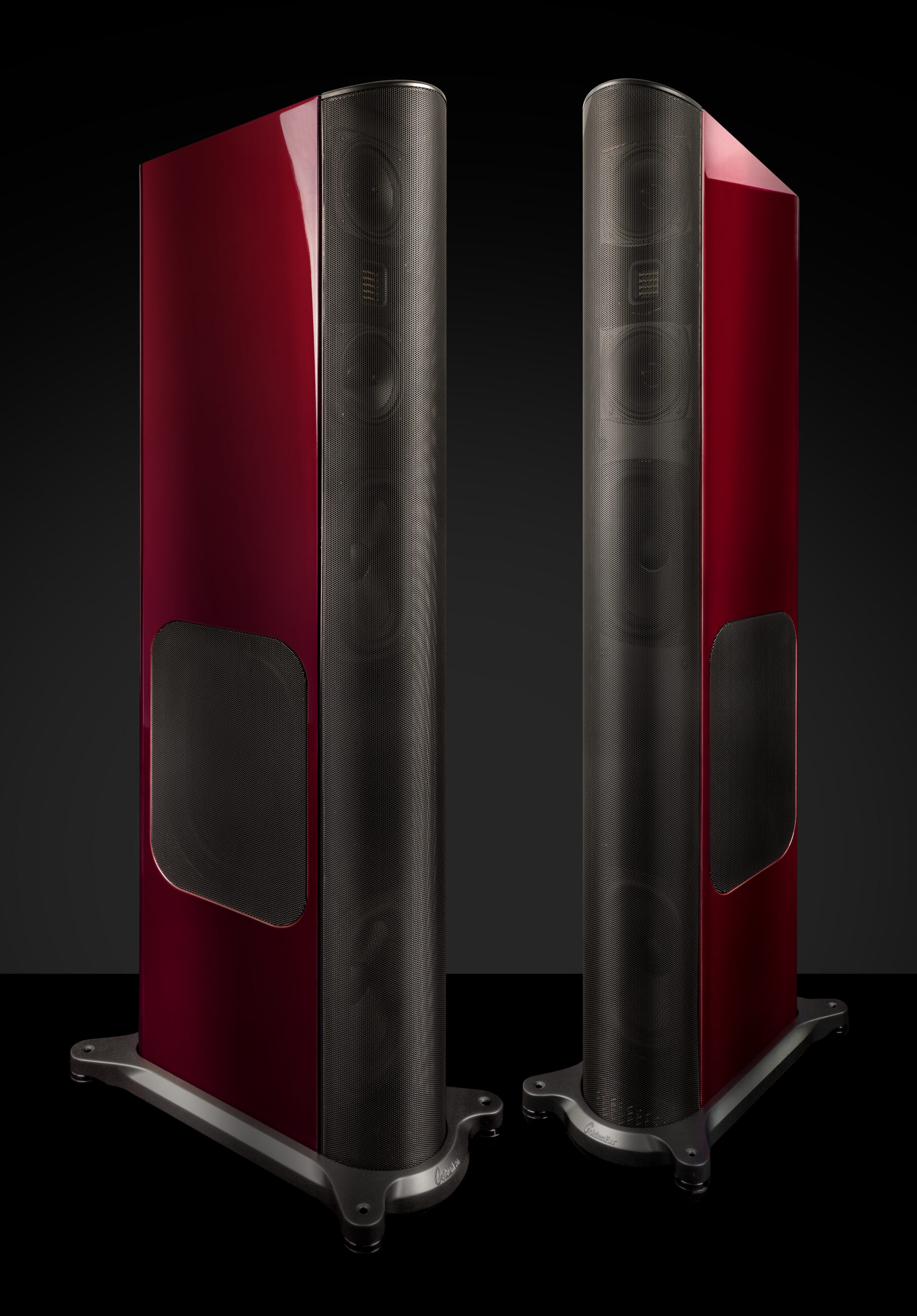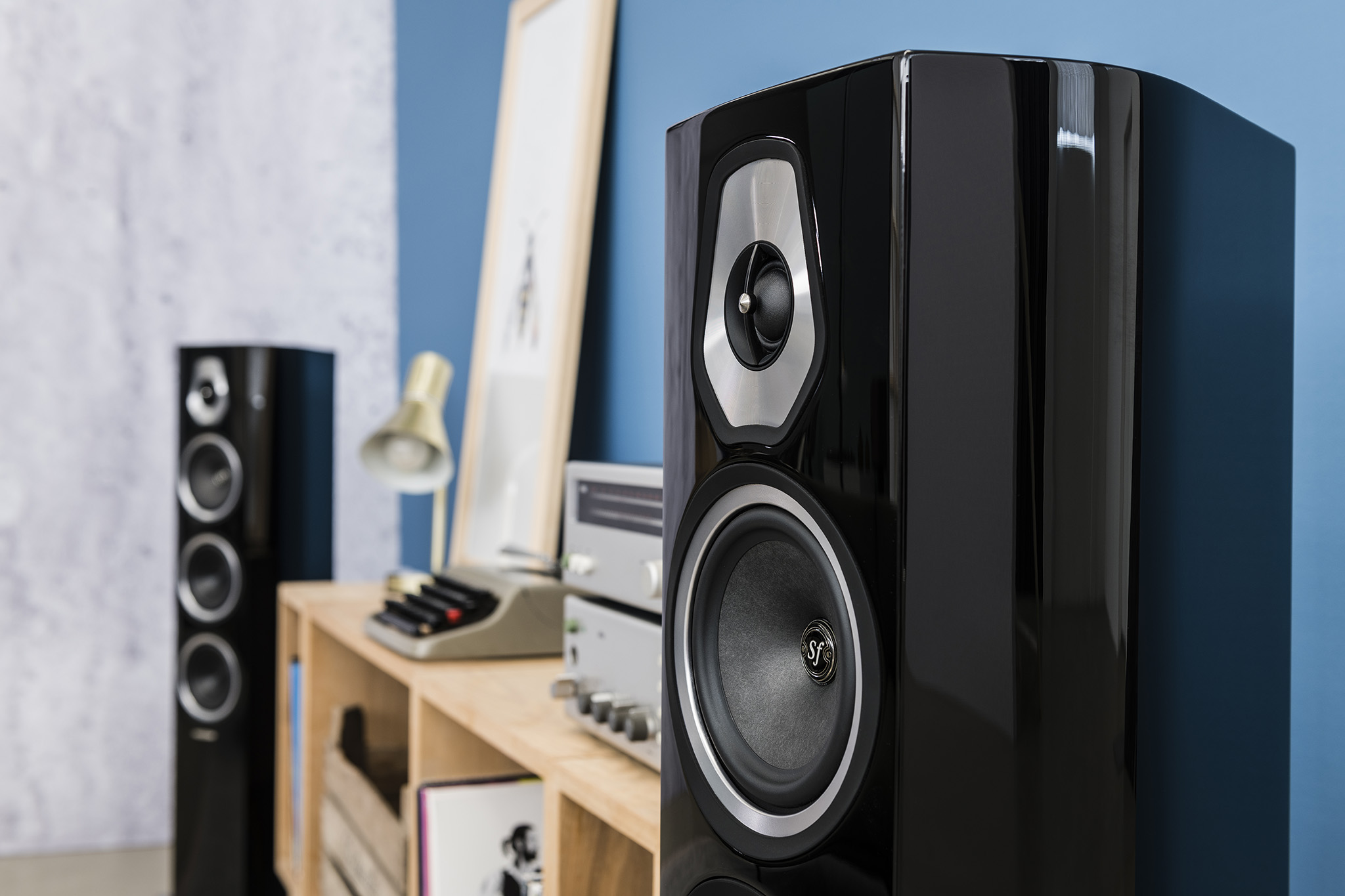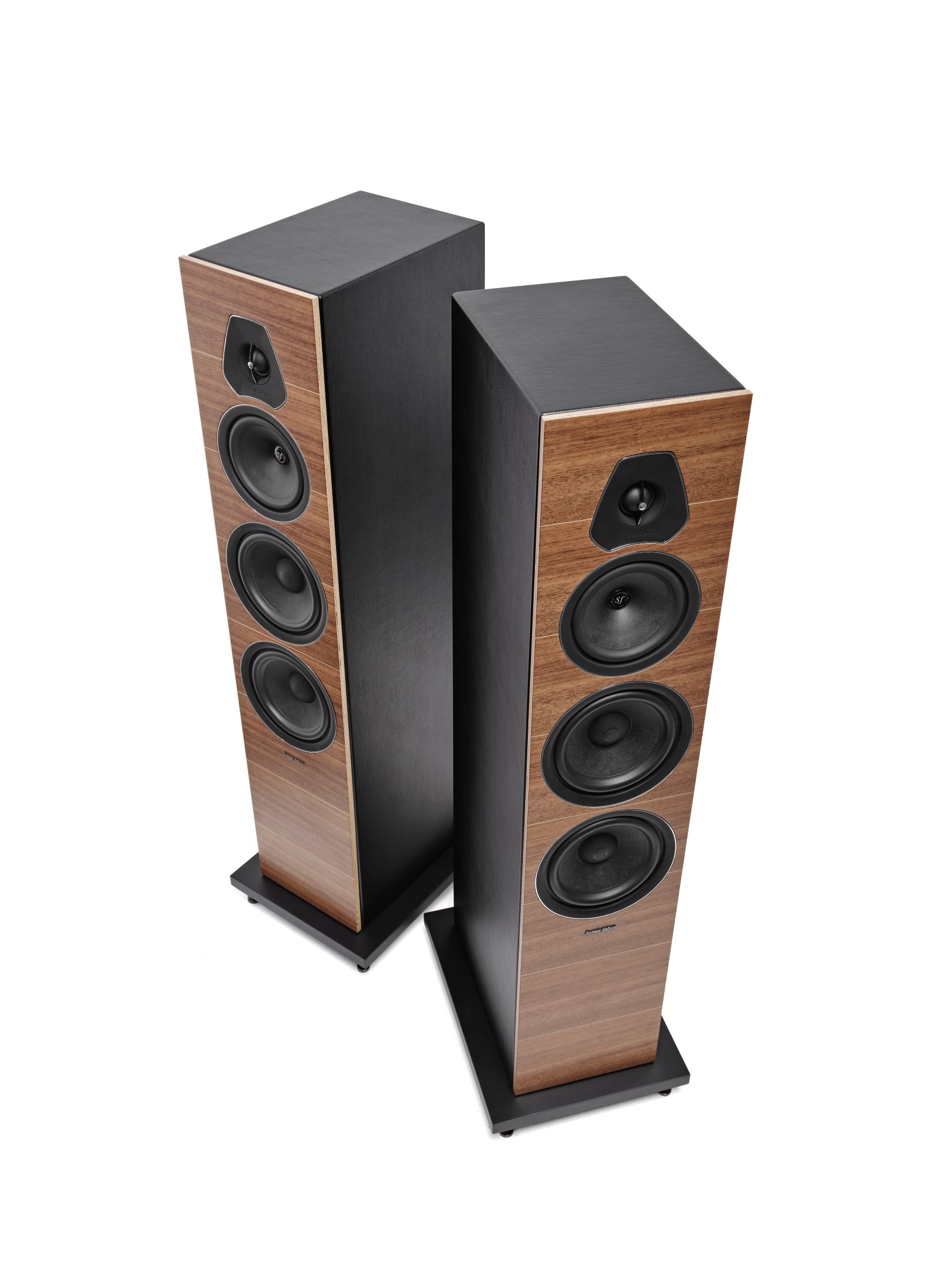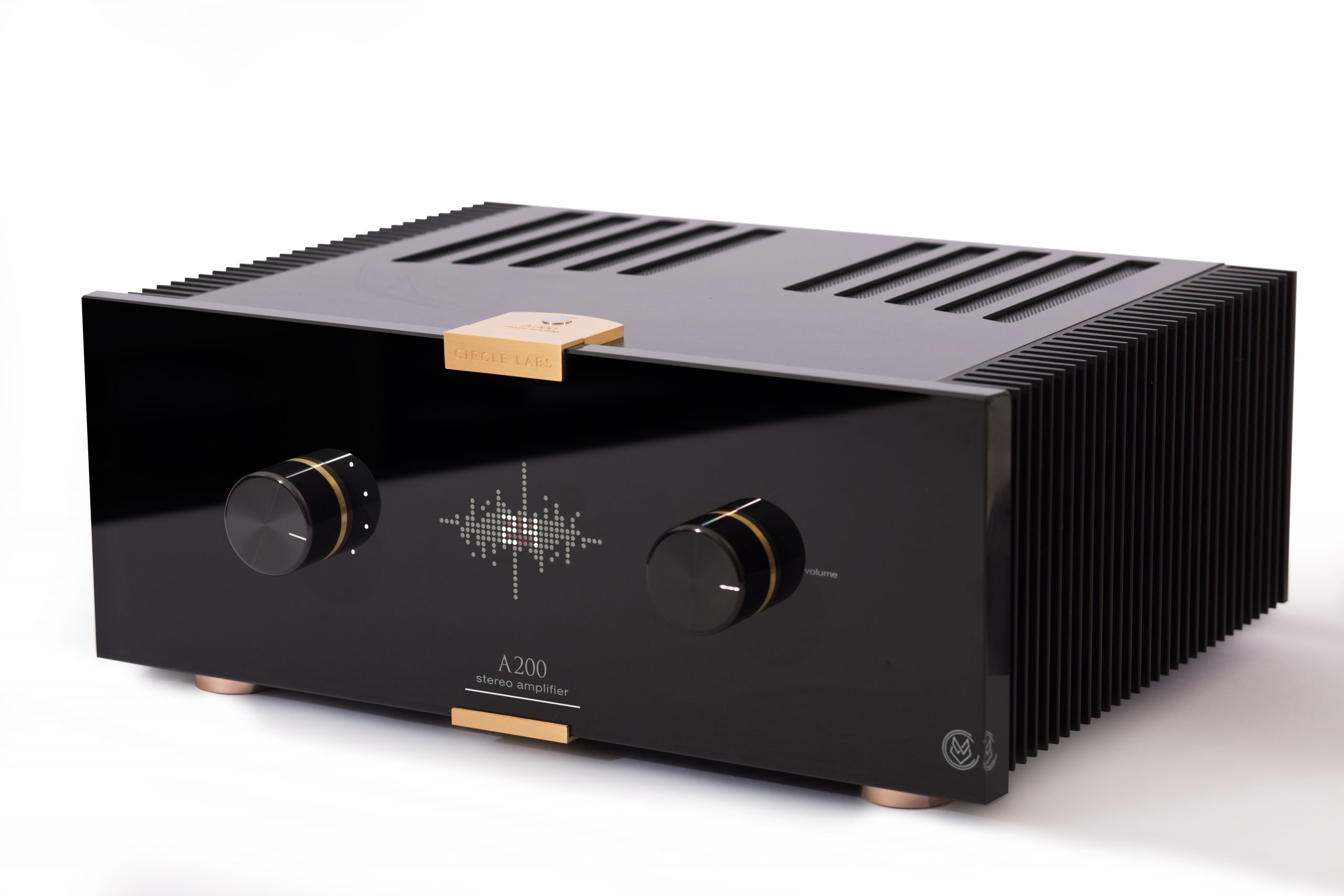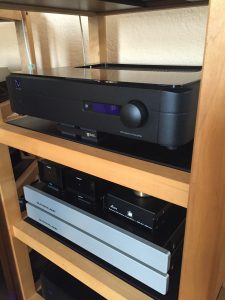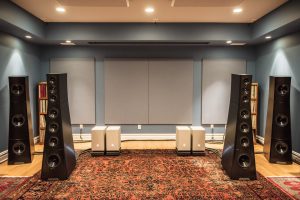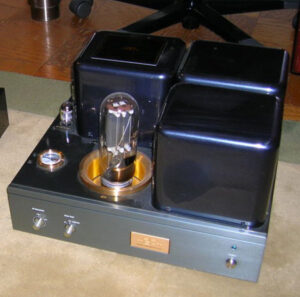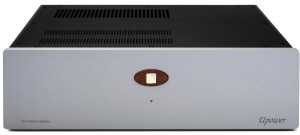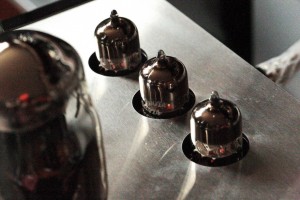While I was evaluating AGD Productions' "The Audion" Amplifier (HERE), there was a rumor that AGD Productions was going to release a new flagship monoblock amplifier. This new amplifier would be based off a more powerful GaN Tube, a technology unique to AGD that utilizes state of the art Gallium Nitride transistors, and offer enough quiet power to drive any loudspeaker out there.
I ended up on an e-mail chain with Alberto Guerra discussing the press release for the new flagship dubbed the Gran Vivace (HERE), and he generously offered for me to have a listen. "The Audion" redefined my perceptions and appreciation for Class D amplification, so I was ecstatic to see what two models up the food chain would be capable of. What I did not expect, and came as a pleasant surprise to me: The Gran Vivace pair also had AGD Productions' Andante (HERE) preamplifier tagging along.
The Andante is not really a preamplifier. Or, maybe, this Gen X-er needs to get woke with today's multi-function preamplifiers and accept they now include all sorts of integrated sources. Monikers aside, the Andante offers a reference level analog preamplifier, 256 precision resistor stepped volume control, DAC, phono stage, network streamer, and Bluetooth. The Andante does not include a headphone amplifier.
The only tragedy of this audition was its brevity. I was unable to truly dig into the function of the Andante, and while I was able to characterize the Gran Vivace well, I do believe a more formal audition would have truly fleshed out, what I found to be, a unique performance.
Gran Vivace
Like The Audion, the Gran Vivace possesses a lot of amplification in a small package. 400 watts at 4 Ohms with 50 amps of current delivery comes from the Gran Vivace's Club cracker box sized foot-print. It is nice to have that kind of power in a monoblock amplifier that does not weigh north of 60 lbs.
Aside from a lot more power, the Gran Vivace doubles the standard Pulse Width Modulation (PWM) switching frequency of The Audion and Vivace to 800Mhz, or 800,000,000 "ons" and "offs" every second. This kind of switching speed means zero undesirable digital artifacts make it into the music. The sonic result is a perceptually lossless amount of information.
Audibly this was a very notable difference from The Audion, and the Gran Vivace was capable of inner detail that kept pace with my Bricasti M15. The similarity ended there, however, as both amplifiers take very different paths to get to the musical end result. Staying true to AGD's design goals, I found the Gran Vivace to perform very much like a SET (Single Ended Triode) amplifier…but with drive.
The Gran Vivace had more than enough power to control my loudspeakers, big and small. The loudspeakers included my dual ten-inch woofer 4-way design, an eight-inch woofer higher efficiency design with a ribbon tweeter, and a three-way time-correct, wide dispersion stand-mount loudspeaker. Through all the loudspeakers, my music had some of the most holographic imaging I have heard to date. If concert halls, electronic trance, female and male vocals, or jazz club recordings put the honey glow in your cheeks, the Gran Vivace will deliver the atmosphere you have been searching for.
There is little need to go into frequency extension, or drive. Not only is it expected at the Gran Vivace's price point of $18,000/pair, but if it was lacking, I am unsure I would be writing this! It is worth to note, however, that in accordance with the SET sound, I would characterize the Gran Vivace as musical and romantic. In fact, the overall presentation is so laid-back, wide-open, and with a liquid-pure midrange, that the Gran Vivace may be one of the easiest listening experiences I have had since my time with an Audio Research VT200.
On a side note, simply because I love attention to detail, the second object my eyes fall upon when opening an AGD Productions pelican case are their power cords. I was plugging into the Clarus Audio Duet (HERE) wondering why more manufacturers do not assure the quality of their components all the way back to the wall. I wish AGD productions sold their power cords separately. They are lovely.
The sonic character of the Gran Vivace is unique for its price point. I have found many amplifiers around its selling price to provide a greater apparent sense of attack at the beginning of a note. The "p" in the "pluck" of a guitar string is a good example. It is splitting hairs, but this may be due in part (or in whole) to why the Gran Vivace has such outstanding homogeneity.
In the spirit of complete, homogenous sound: To achieve a SET-like presentation, one would need a SET amplifier. The low power of SET amplifiers limit loudspeaker choices. Tremendous advancements have been made in loudspeaker driver technology, and while these advancements are producing loudspeakers with extended frequencies, low distortion, wide dispersion, and unparalleled impulse response, these drivers are still only moderately efficient.
SET amplifiers require high efficiency loudspeakers. Yet, there are some things high efficiency horn loaded compression drivers, ribbon tweeters, and high efficiency cone drivers cannot do. As there are things moderately efficient cone and dome drivers for home audio cannot do. It's all wrapped up in physics. No less, this is where I see the Gran Vivace in a unique position. In my experience, the Gran Vivace has been the only high-power amplifier that presents like a SET amplifier. Now there is a feasible amplifier choice for one to use any loudspeaker, and achieve a "signature SET" amplifier sound.
The Andante
As mentioned above, the Andante is a reference-level preamplifier of a modern vintage that has a rather extreme amount of capability. During my brief time with it, I was only able to test a handful of features adequately enough to discuss.
Most of my listening to the Andante was with Qobuz. The Andante was not fond of Qobuz through my Google Pixel 3 phone via the USB port. This could have been for many reasons, some unrelated to the Andante, that I was unable to flesh out in the time I had. Qobuz did sing pretty through my laptop when hooked up through the USB port. We will come back to this part of the listening "sesh" in a few.
I also had a listen to a few of my favorite albums using a Rega P3. The standard Elys 2 cartridge meant the Andante was set to the Moving Magnet side of the integrated phono preamp. The Andante had one of the quietest phono stages I have ever heard, with neutral tonality and generous detail. Extrapolating the experience out to a higher-end turntable: I am unsure there would be a need for a separate phono stage with the Andante in your system, at just about any level short of a purely analog listening rig.
The Andante will set a listener back $12,499. This would bring the total with a pair of Gran Vivace to a Washington under $31,000. The AGD combo is a close cost equivalent to my own primary listening system, so the direct comparison was very entertaining. The major difference is: the Bricasti Design M1 with the Network Streaming option does not have a preamplification section. The M1 drives any amplification directly. The fact that the M1 does not possess nearly the total capability of the Andante, and focuses on simply being a DAC may account for the sonic difference, however I found the M1 to possess significantly better transient response and inner detail over the DAC in the Andante. A slight head-scratcher until I opened a gigantic can of worms that I found in the Andante's settings called "dither".
You see, the Andante possesses selectable filters which are a "nice-to-have" to get the sonic flavor you desire, but further, it has a dithering setting as well. Dithering is typically used in mastering audio. Dither randomizes harmonic digital noise, by injecting inaudible random noise, that reduces the overall audible noise, and brings out resolution at lower bitrates. This is my attempt at an oversimplification—take it or leave it.
Why is dither more important at lower bitrates? It helps "ping" the least significant bit (LSB) of resolution, which is ironic because in many ways it is the most significant, into the correct "on" or "off" position. It is not perfect, and there will be false positives when dithering, but dithering gets the LSB right, more often than not. This means more resolution is fleshed out which adds to apparent sonic space, fine inner detail, and overall realism.
Ultimate purists will say something akin to: "You shouldn't need dithering at bitrates above 16-bit." This conundrum tied me up for a while because the sonic difference was indeed far less when using higher resolution media, but for me it was still significant. At least on the Andante, and at least through both the Bricasti M15 and the Gran Vivace. The moral of the story is: I found using the dither option in the Andante significantly added to its performance at all resolutions I tested. I do believe from the listening I did that the DAC the Andante possesses builds into its value well.
A Worthy Dive into the Deep End
In the heart of a rather cold, but not abnormal New England winter, I spent much of the time listening to the Grand Vivace and Andante together as a pair. I usually have a hot, black coffee in my hands keeping them warm in the bowels of my listening dungeon. I always find winter listening to be cozier and more enjoyable.
The listening experience The Gran Vivace and Andante brought to my space was a perfect fit for this time of year. So many times, while evaluating, I frustrate myself and have to remember: it is not about sitting in my throne, with the equipment kneeling before me while I decide its fate. It is not about being an expert, heck, some of the best listeners I know are very casual! It is about the music, and how well any piece of equipment can translate the artist's message. This means at some point I must simply stop trying to evaluate, and listen.
I reach this point with everything I audition. When I got there with the Gran Vivace and Andante, I realized that, as a system, there is a great value for listeners who simply love their music. How do I call $31,000 worth of listening equipment a value? Let's break this down because I am unsure it is ever discussed much in this world.
Look at it as a bell curve. Let's immediately eliminate those to the left extreme who love music, but could never justify having a luxury-car priced audio system. I wish I could have stopped there years ago! However, there was a calling, that started as "upgrade-itus" early on, but soon made me realize I was searching for something more in my personal listening experience. Over the years of sharing this great passion I have found that listening is deeply personal to all music lovers.
Scratch the extreme right side of that bell curve as well. Arabian princes, recording artists, and hedge fund managers aside, purchasing home-priced audio systems is just not feasible for the 99% to the left of them on the curve. Add in the law of diminishing returns, and there have been house-priced systems that I have found to be no more enjoyable than a well-planned, modest system a majority of us can experience in our homes.
This leaves us with listeners that fall between the 84% and 16% points on the curve. Ever wonder where the 80/20 rule comes from?! All it takes is a little rounding… The Grand Vivace/Andante is a little easier to afford for those who hang out closer to 84%, but is not out of reach of the 16% listeners, either. However, no matter where you fall, the Grand Vivace and Andante is an investment you would have to seriously weigh and consider. Whatever gear you invest in at the Gran Vivace and Andante's price-point , it will need to keep you engaged in your music, at a very high level, for years to come.
Developing true, high fidelity audio equipment is not cost-effective. How many of any given, truly high-end piece will any company sell? Not nearly as many as the Bose Bluetooth speaker one would see in Walmart. As a follow up question, I then ponder: how many listeners are so passionate about their music, they are willing to make the investment into $31,000 of gear, before everything else required, to deeply hear the music? Not as many that enjoy loud motorcycles or the open ocean. This leaves a company like AGD productions with no other reason to develop equipment like the Gran Vivace and Andante than their own, deep passion for bringing a top-tier musical experience to the listeners who enjoy it, no, deserve it the most.
When I stop evaluating, and start listening, this is where I find the value in the Gran Vivace/Andante pair. Add the functionality of the Andante to the mix, which assures you will not have to upgrade or purchase another separate source within reason, and AGD productions has provided a flagship system that in the "gran" scheme is quite affordable. If deep engagement with the music is at the top of the priority list, have a listen to the Grand Vivace and Andante by AGD productions. It would come as a surprise to me if one or the other, or both, do not find refuge in your listening space. As always, Happy listening!
Gran Vivace Amplifiers
Retail: $18,000/pr
Andante Preamplifier
Retail: $12,499
AGD Productions




